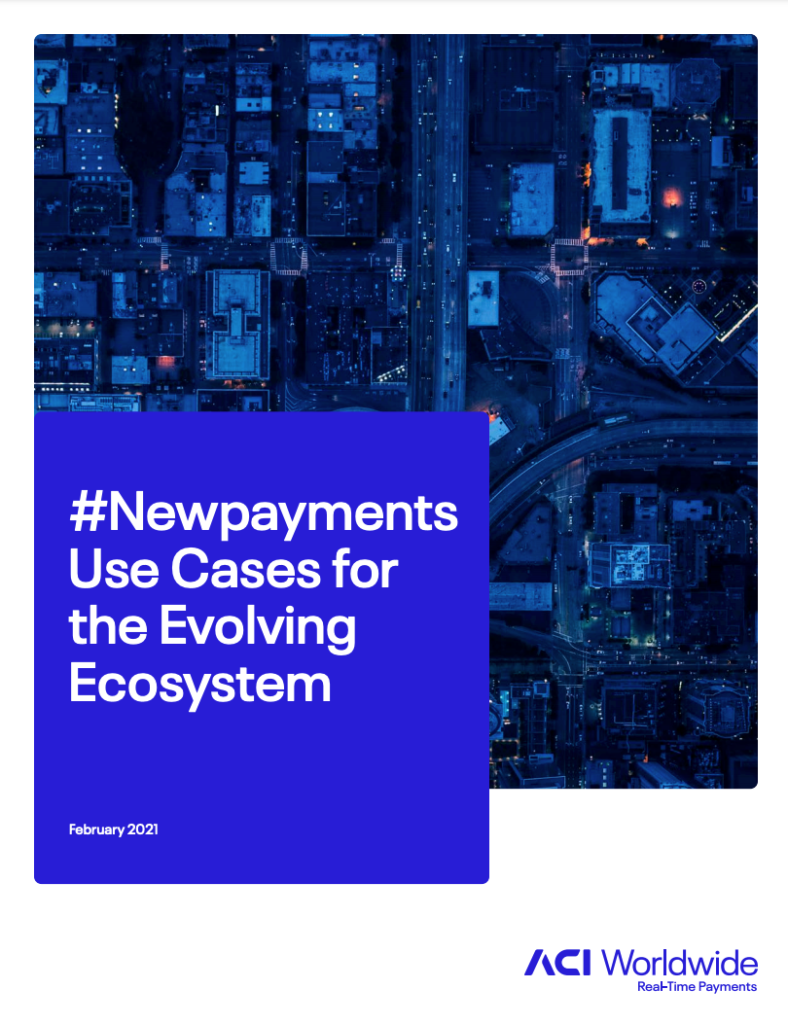
Near field cash elimination
Smart-Device Initiated Real-Time Payments
Challenge
Reduce use of cash for Person-to-Person (P2P) and small business payments with smart-device initiated real-time payments
Considerations
1. How to remove cash-related inefficiencies and risk for retail customers? Cash is expensive for both consumer (withdrawal fees) and small businesses (fraud, loss, mistakes, deposit fees), but it does mean a real-time balance and instant liquidity for both parties
2. How to enable simple payment instruments? Small businesses, individuals, and independent artisans can’t justify POS investment for infrequent transactions. They may only trade for a few hours a day during craft or flea markets
3. How to provide a cost-effective service for customers? Adoption will depend upon ease of use, and associated fees (if any). Solution must look to drive value to provider from transaction volumes as payers and payees are retail customers accustomed to cash
Solution
1. Enable a new credit transfer service over real-time payment rails to ensure real-time clearing of funds into payee’s account, for an experience that is better than cash.
By removing the need for handling cash independent sellers remove risk from the business. They often have no tools or experience for identifying fraudulent notes, and they may be operating in an unsecured location such as outside at a busy flea market. Enabling it via real-time payments solves the major problem small traders face: cashflow. Historically they avoided card payments due to settlement delay, but with real-time payments the funds are cleared into their account instantly, enabling them to pay out their business expenses. If they receive their payments in cash then they will pay suppliers in cash, underutilising their banking services. With a real-time payment service, they also pass more of their earnings through their banking account, providing improved insight and float benefits for their banking provider.
It’s likely to drive purchase conversions from end customers, as they can make spontaneous or larger purchases without needing to pre-empt these with cash withdrawals. In some economies it’s highly unlikely that potential customers will carry cash daily, so it’s critical they can still transact with small merchants. Consumers also prefer to make these kinds of unplanned purchases via a method that allows them to keep easy track of their spending against their budget, a real-time balance is critical to accurate personal finance management.
2. Leverage new PSD2 and open banking regulation to enable payment initiation services via smart devices, linked to a mobile app. Near Field Communication (NFC) enabled devices are so common that they are the obvious choice as the replacement physical element in the transaction process.
Investment in min Point of Sale (POS) devices is not realistic for individual consumers, nor independent sellers for whom their business may be just one of their income streams and therefore they trade infrequently, or for limited time periods. More useful would be innovation to transform existing NFC enabled devices into payment acquiring tools, as well as their current role as payment initiation instruments. This could be done with a mobile app that allows the payee to send a Request for Payment message based on proximity determined by NFC, or the payer could choose to push a payment to the payee from their mobile app to the next receiving device to come within NFC proximity. Both scenarios require no additional hardware.
3. Embed within the mobile banking app to ensure the service remains connected directly to the bank account, and is not a separate wallet provided by a Payment Initiation Service Provider (PISP) that dilutes the customer relationship.
Ensure the ability to send a Request for Payment is integrated into the bank’s own mobile app to be the primary driver of transactions, and ensure ubiquity for customer for whom their banking provider does not offer capabilities. Take advantage of PSD2 and open banking rules to allow an account information enquiry message via NFC so that payments can be pushed from your service to those whose banks have not yet enabled for the service.
Direct account to account payments circumnavigate the card networks to increase margin for the payment recipient (in the case of independent traders) as well as negate the need to charge a fee for the payment type. Delivering this new service free of charge for customers will drive new use cases and new transaction volumes over real-time rails, against an investment already made by the bank.
CX optimization
Work with existing smart device operating system manufactures to incorporate the flows into the native options of the device, to negate the need to enter the mobile app for every transaction. Create a CX that is as simple as current cards-based mobile payments to traditional NFC-enabled POS devices.
New Payments Use Cases
Select another use case.
Consumer Payment Processing Solutions
Discover innovative use cases that drive more value from your existing ACI solution.
ACI Low Value Real-Time Payments Solution
Discover innovative use cases that drive more value from your existing ACI solution.
Let’s Talk
Our payment experts are ready to help you tackle your payment challenges. Set some time to speak today!